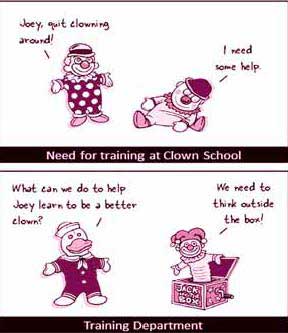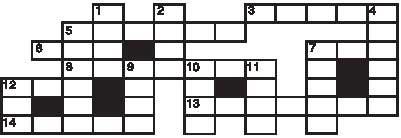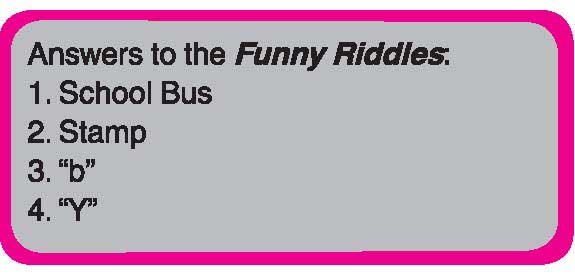QUOTABLE
QUOTES
“Creativity is a type of learning process
where the teacher and pupil are located in the same individual.”
― Arthur Koestler
“Creativity is so delicate a flower that praise tends to
make it bloom, while discouragement often nips it in the bud.”
― Samuel Butler
“The
freedom to make mistakes provides the best environment for creativity.
Education isn't how much information you have committed to your memory, or even
how much you know. It's being able to differentiate between what you know and
what you don't.”
―
Anatole Franc
“Creativity is knowing how to hide your
sources”
―
C.E.M. Joad
“The
worst enemy to creativity is self-doubt.”
―
Sylvia Plath
NO
COMMENT!

Share your
ideas with us: azimi.hz@gmail.com
TEACHING
TIPS
THREE
Keys to a Creative Language Classroom
Want
to know a secret? Curiosity didn’t kill the cat. Lack of creativity did! The
world has woken up to the fact that creativity is not just a fluffy term
assigned to kindergarten art projects. It is essential to human development,
happiness, and last but not least, learning!
Let’s
start with some reminders on why creativity is a tool that’s worth the extra
effort.
a. Boosts participation. Giving students the
power to create on their own—whether it be presentations, arguments or
assignments—keeps them on their toes. They won’t just be going through the
motions. Unable to rely on routine, they will be alert and waiting to hear what
you have in store for them next.
b. Promotes active
learning.
By asking students to think outside the box, stray beyond normal assignment
guidelines and use their own creativity, you can keep them in the realm of
active learning for longer periods of time.
c.Creates a fun and
positive learning environment in the classroom. Not only does creativity make
class more enjoyable for the students, but it is also more fun for you, the
teacher. Students have so much to offer, and sometimes stepping out of your
normal routine and feeding off of their creative energy can do wonders. Fun and
positivity are contagious. Creativity is the spark that gets it all going.
d.
Improves language retention. Ultimately, this is what we are after. Our goal is to
teach students a language. When the other four factors come together, the
result will be improved retention due to increased participation, quality
assignments, active learning and fun.
Now,
back to business! The following is a brief note on 5 keys to a creative
language classroom:
1. Resist Running Like
Clockwork
Routines can be useful. They are a sequence
of habits that keep you on track and prevent complications. Not every day has
to be a completely unique language learning experience. A little routine never
hurt anyone, but zero creativity can.
Throwing in some spontaneity every
now and then increases the level of default alertness that your students
operate at. Routines are comfortable, sometimes too comfortable, letting
students sit back and “turn off.” Mixing things up requires them to pay more
attention and listen carefully.
2. Invert the Routine
You don’t have to completely change
the routine to mix things up, you just have to change how the routine looks
from the outside.
If you run the same three-mile loop
every day, pretty soon your body will get used to it and it will become easy.
Give yourself a new three-mile loop and all of a sudden you’ll be challenged
again. The same is true with our students’ brains. We want to keep them from
getting too comfortable. Let’s take a look at some tricks to help clarify:
• Do the opposite. Take something
familiar and do it differently. For example, if you always teach from the front
of the class, try teaching from the back; if your students always sit in rows,
try putting them in a circle.
• Switch up the order. Do daily activities in
a different order. If you usually give a homework assignment at the end of
class, for example, give it at the beginning instead.
• Change roles. Let students do the
work. For example, if you usually read out the class schedule every morning,
have one of your students do it one day.
3.
Give Students the Power
As
teachers our best source of inspiration is our students themselves. It’s okay
to ask them for their ideas and opinions when designing a curriculum. Students
are used to being told what to do and just going with the flow. Pull them back
out of passive mode by giving them the power. Let them have a stake in the
class by helping plan the curriculum for the next day or week. Here are some
ways to do so:
• Let students choose. Describe two
assignments then ask something like, “Reza, which exercise would you like to do
first?” Giving them the chance to choose will instantly wake them back up.
• Involve students in
scheduling. Present
interchangeable topics that you plan to teach the following week. Write the
days of the week on the board then ask students which topics they’d like to
learn on which day. Have them explain their logic. Write the topics down next
to the corresponding day and time, you have a student-made schedule.
• Regularly ask for feedback. Ask students if they
have a favorite language exercise or assignment. If so, then conduct it more
frequently. Often, what they want and what they need are the same thing.
They’ll be the first to know if they’re losing interest or not understanding
something.
JOKES
Judge:
“Why did you steal the car?”
Man: “I had to get to work.”
Judge:
“Why didn’t you take the bus?”
Man:
I don’t have a driver’s license for the bus.
- Can a kangaroo jump higher than a house?
- Of course, a house doesn’t jump at all!
-
Anton, do you think I’m a bad mother?
- My
name is Paul!
-
Patient: Oh doctor, I’m just so nervous.
This is my first operation.
-
Doctor: Don't worry. Mine too!

FUNNY
RIDDLES
1. What is big and yellow and comes in the
morning, to brighten mom's day?
2. I
travel all over the world, but always stay in my corner. What am I?
3. What do you call a bear without an ear?
4.
Which is the most curious letter?
(Check below for the answers.)
CROSSWORDS:
Puzzle in the past
Past tense verbs show actions that happened in the
Past. Add------ ed to form the past tense of most verbs. Other verbs have
irregular past tense forms.
Write the past tense of each verb to complete the
puzzle.

Across
3. Find
5. Become
6. Win
7. Cut
8. Utter
12. Do
13. Dress
14. Date
Down
1. Go
2. Give
4. Dot
5. Buy
7. Choose
9. Tell
10. Ride
11. Draw
12. Do
“How much do you know about past tense verbs!?” We know! You are
teachers! This time, our puzzle is a simple sample puzzle you can use in your
classes for the students who have just learned the past tense. Hey! This issue
is related to creativity, right!? We wanted to be creative, too!

References:
Quotable Quotes:
1. https://www.goodreads.com/quotes/tag/creativity
2. http://learningrevolution.com/page/great-educational-quotes
Caricature: https://www.google.com/
Teaching Tips:
http://www.fluentu.com/blog/educator/creative-language-classroom/
Jokes:
1. http://www.wikihow.com/Make-a-Joke
http://www.short-funny.com/
Funny Riddles:
2. http://www.doriddles.com/riddle-263#show
3. https://www.rd.com/jokes/riddles/
Crossword: http://www.scholastic.com/parents/resources/freeprintable/writing-printables/puzzle-past